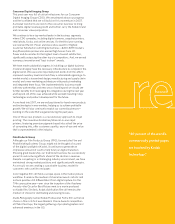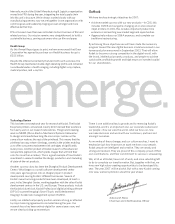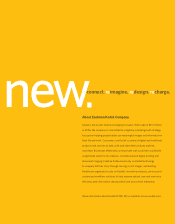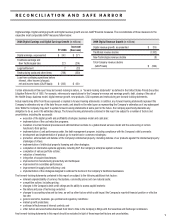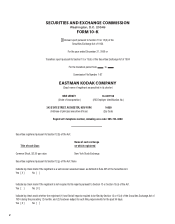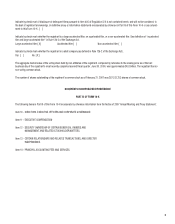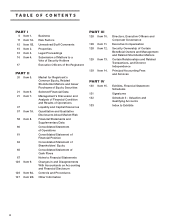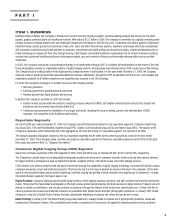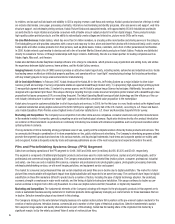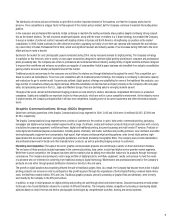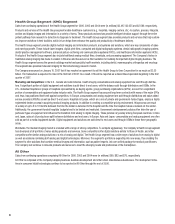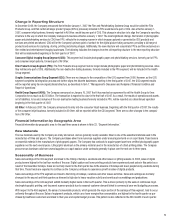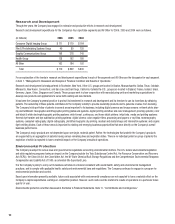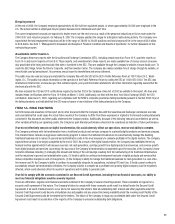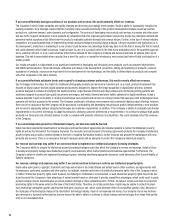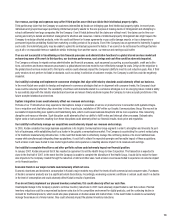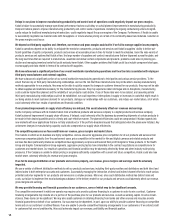Kodak 2006 Annual Report Download - page 13
Download and view the complete annual report
Please find page 13 of the 2006 Kodak annual report below. You can navigate through the pages in the report by either clicking on the pages listed below, or by using the keyword search tool below to find specific information within the annual report.
to retailers, and as such will add scale and stability to CDG’s ongoing revenue, cash flows and earnings. Kodak’s product and service offerings to retail-
ers include retail kiosks, color paper, processing chemistry, retail store merchandising and identity programs, after sale service and support, web infra-
structure support, and wholesale printing services. Kodak Picture Kiosks and associated media, with approximately 85,000 installations worldwide,
are sold directly to major retailers and provide consumers with a flexible array of output products from their digital images. These products include
high-quality custom printed products, and the ability to automatically create collages and interactive, picture-movie DVDs set to music.
On-Line Web Services: Kodak Gallery, which has more than 50 million members, is a leading online merchandise and sharing service in the category.
The Kodakgallery.com site provides consumers with a secure and easy way to view, store and share their photos with friends and family, and to receive
Kodak prints and other creative products from their pictures, such as photo books, frames, calendars, and a host of other personalized merchandise.
In 2006, Kodak entered a partnership to develop and sell a line of branded Martha Stewart photo products on Kodak Gallery. Products are distributed
directly to consumers’ homes, or through relationships with major retailers. Additionally, the site is a chosen partner for leading companies such as
Adobe, Apple, Microsoft, and Amazon.
Kodak also distributes Kodak EasyShare desktop software at no charge to consumers, which provides easy organization and editing tools, and unifies
the experience between digital cameras, home printers, and the Kodak Gallery services.
Imaging Sensors: Kodak’s line of CMOS sensors provides an attractive market opportunity, including mobile, automotive and industrial sectors. Kodak
has leading sensor architecture intellectual property positions, and operates with an “asset light” manufacturing strategy that includes partnerships
with key industry players for large-scale semiconductor manufacturing.
All-in-One Inkjet Printers: In February 2007, Kodak introduced the Kodak All-in-One Ink Jet Printing System as a major initiative to drive future
revenue growth and earnings. Four key components enable an expected breakthrough market entry: 1) a proprietary high-speed inkjet printing system;
2) nanoparticle pigment-based inks; 3) instant-dry, porous papers; and 4) Kodak’s unique Image Science technologies. Additionally, the system is
designed with a permanent print head. This unique offering is targeting the high-volume document and photo printer market with a breakthrough value
proposition that saves consumers 50% on everything they print. The Inkjet Operating Model leverages Kodak technology and the efficiency of the cur-
rent industry infrastructure to achieve an “asset light” approach to deliver this unmatched value proposition to the marketplace.
Kodak aims for superior customer satisfaction in all of its products and services. In 2006, for the third year in a row, Kodak ranked as the highest brand
in customer satisfaction among digital cameras in the $200-$399 price segment (nearly half of the U.S. market), according to J.D. Power and Associ-
ates. Kodak EasyShare Photo Printers earned highest levels of customer satisfaction in J.D. Power and Associates Snapshot Printer survey.
Marketing and Competition: The Company faces competition from other online service companies, consumer electronics and printer manufacturers
in the markets in which it competes, generally competing on price and technological advances. Rapid price declines shortly after product introduction
are common in this environment, as producers are continually introducing new models with enhanced capabilities, such as improved resolution and/or
optical systems in cameras.
The key elements of CDG’s marketing strategy emphasize ease of use, quality and the complete solution offered by Kodak products and services. This
is communicated through a combination of in-store presentation on-line, public relations and advertising. The Company’s advertising programs actively
promote the segment’s products and services in its various markets, and its principal trademarks, trade dress and corporate symbol are widely used
and recognized. Kodak is frequently noted by trade and business publications as one of the most recognized and respected brands in the world.
Film and Photofinishing Systems Group (FPG) Segment
Sales from continuing operations of the FPG segment for 2006, 2005 and 2004 were (in millions) $4,156, $5,325 and $7,051, respectively.
This segment is composed of traditional photographic products and services used to create motion pictures, capture and print photographs, and for
professional and commercial imaging applications. The Company manufactures and markets films (motion picture, consumer, professional, industrial
and aerial), one-time-use and re-loadable film cameras, consumer and professional color photographic papers, photographic processing chemicals,
wholesale photofinishing services, on-site event imaging solutions, and equipment service and support.
The market for consumer and professional films and certain industrial and aerial films are in decline due to digital substitution. The market for motion
picture films remains stable with significant impact from digital substitution still expected to be some time away. The continued future impact of digital
substitution on these film markets is difficult to predict due to a number of factors, including the pace of digital technology adoption, the underlying
economic strength or weakness in major world markets, and the timing of digital infrastructure installation. Film usage continues to decline as con-
sumers continue to migrate from a film-only household, to a dual-use (digital camera and film) household, or digital only household.
Marketing and Competition: The fundamental elements of the Company’s strategy with respect to the photographic products in this segment are to
create a sustainable business serving customers for traditional products while aggressively managing our cost structure for those businesses that are
in decline. Selective innovation plays a key element in this strategy.
The Company’s strategy for the entertainment imaging business is to sustain motion picture film’s position as the pre-eminent capture medium for the
creation of motion pictures, television dramas, commercials and a number of other types of theatrical productions. Selective investments to sustain
film’s superior image capture and quality characteristics are part of this strategy. Kodak has the leading share of the origination film market by a
significant margin, led by the widely acclaimed Vision II series of motion picture films.




